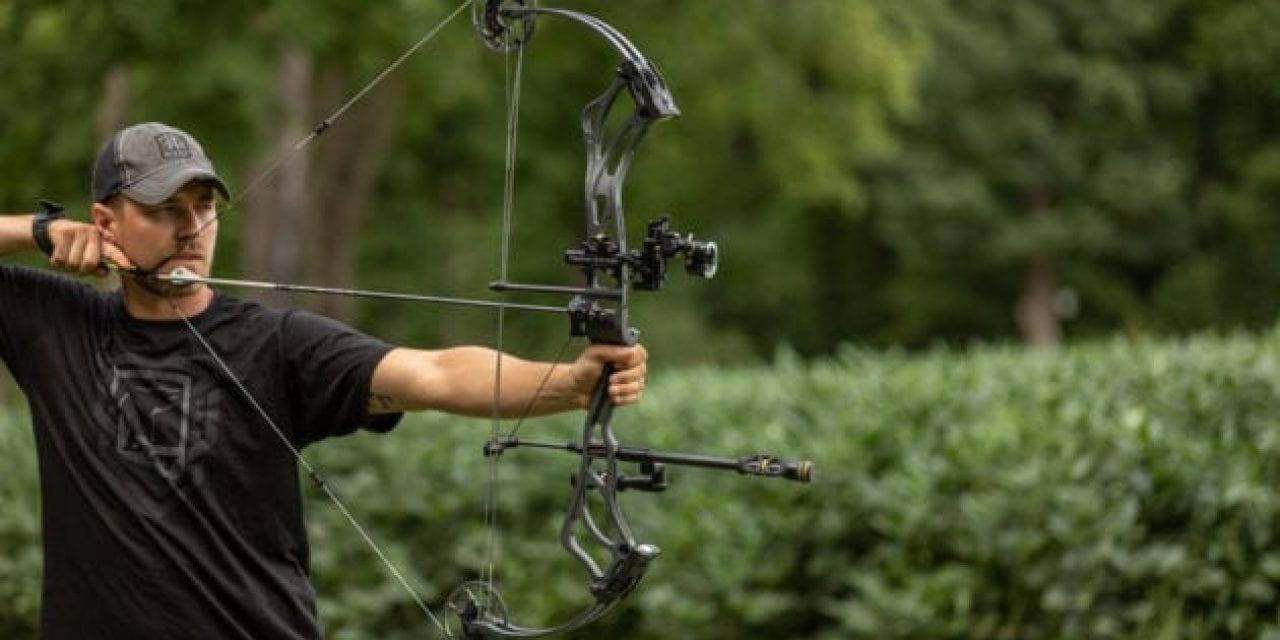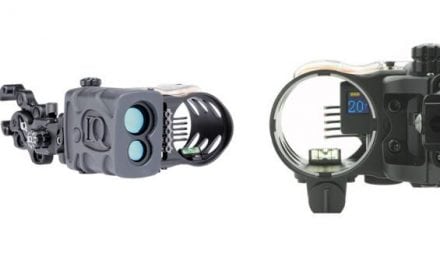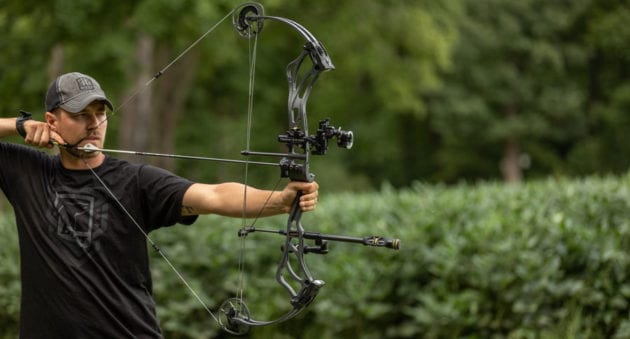
Choosing the right bow sight can be a daunting task for anyone. Here are a few tips to consider before making your purchase.
There are thousands of bow sights on the market archery lovers taking advantage of. Many of these sights include features that seem unnecessary or confusing.
Varieties of sights include those that come pre-attached to bows, used for competition archery or focus on long-range mountain hunting.
Below are examples of different sights and the key features that set them apart.
Multi-pin sights
Multi-pin sights offer many advantages over other options on the market. I personally use these to hunt whitetail in the Texas hill country. The biggest advantage to choosing a multi-pin sight is the ability to set permanent yardages. With permanent yardages in play, I’ll always know where to aim the pin on an animal, even if the animal moves closer or farther from me.
The disadvantage many people conclude from this setup is the fact of having to practice for “splitting pins.” This effect happens when your target is at a distance between your preset pin yardages.
For example, if you have set 30- and 40-yard pins, where should you aim the green and red fiber-optic sight pins if a deer walks in to 35 yards? Well, simply split the difference between the pins and pick your target spot to fall between your two pins.
Below is the sight I have on my own bow.
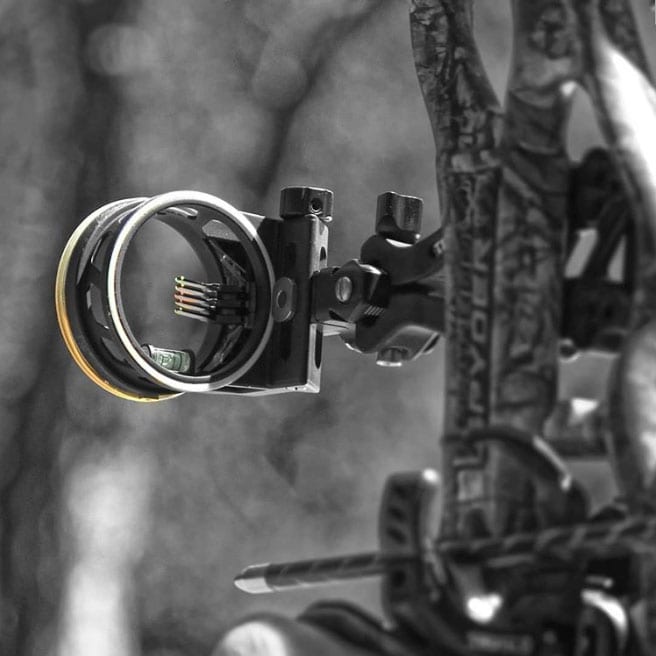
Multi-pin bow sights regularly show up in bow combos that come with accessories already included. Bear Archery recently let us test out their Approach combo, which came with a Trophy Ridge four-pin sight. You can check that out here.
Single-pin sights
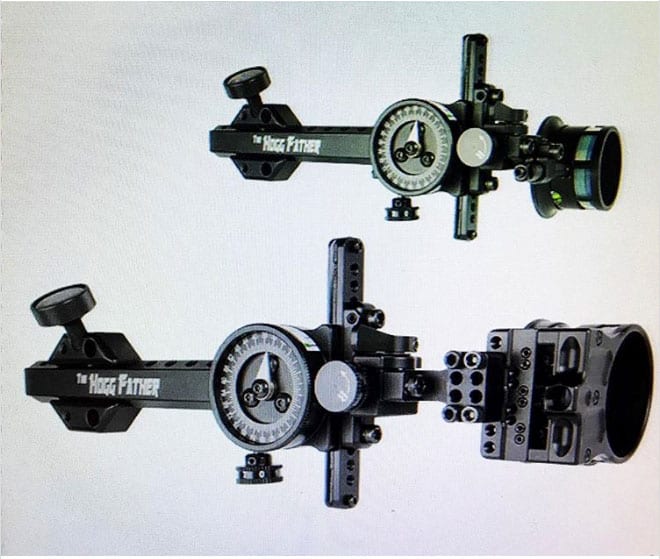
Single-pin sights provide a different advantage in the fact they can dial to a particular, desired yardage. If you look closely at the side of the Spot Hogg – Hogg Father you will see a dial which you adjust to the yardage of your target. These type of sights are used in all sorts of archery competitions across the world because of the exactness of your yardage adjustments. Comparing this to a multi-pin sight, you’ll have a greater chance of hitting quarter-sized bullseyes with a single pin sighted for an exact yardage over trying to “split pins.”
The major disadvantage that pushed me away from single-pin sights comes with my obsession for efficiency. What happens if I’m sitting in a treestand at full draw with a single pin set for 40 yards and a deer comes in for a 20-yard shot?
Well, the yardage pin will be off, and I’ll have to readjust my pin to 20 yards, all while the monster is standing close enough to me that I can hear him breathing. As a whitetail hunter, I don’t even want to consider this risk.
This risk has baffled many before, and companies have been attaching multiple pins to the sights that dial yardages on the spot. If you prefer a dial sight, this is the way to go. But for me, I want to streamline my entire aiming process so I can confidently look through my peep sight and make an ethical shot.
Digital sights
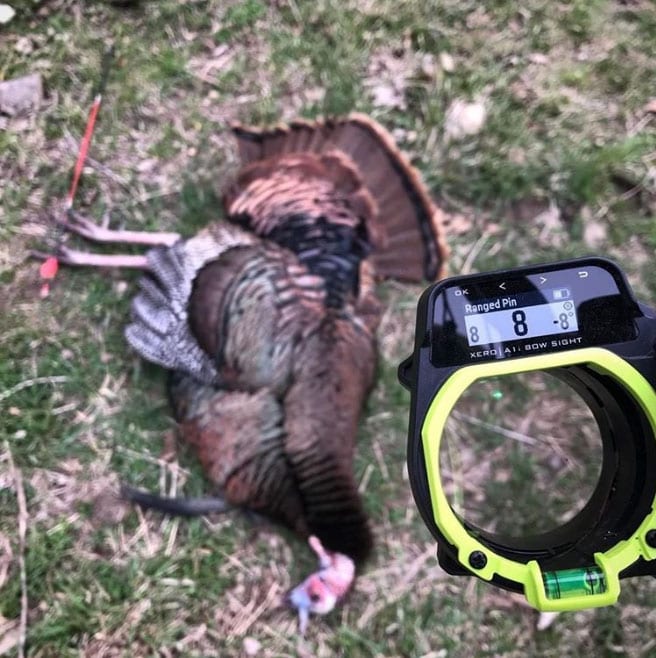
After weighing the advantages and disadvantages of multi-pins and single-pins, many people weren’t satisfied with choosing a side. Thus, the digital bow sights were born. Below you see Garmin’s new Xero A1. This type of sight is new to the archery world, and it’s the best of all if you have enough in your wallet.
The Garmin Xero A1 allows you, with ease, to range and accurately acquire your target in any situation. What’s unique is that the entire system is a digital, single-pin sight. The digital ranging system adjusts the reticle in the display by just the push of the button, with the hand located on your riser. You get the best of both worlds and more! You gain a single-pin sight with full adjustment without having to worry about moving targets, as well and the on-the-fly adjustability of a multi-pin sight.
Now, you’re probably wondering why all archery pros aren’t using this sight. Well first of all, the sight costs $799.99 new. For an unsponsored hunter, this is just too much for a bow sight. The other disadvantage is the loss of primitive technology. As it stands, the top compound bows allow you to preform casual feats that are just impossible to a traditional archer who uses a recurve bow. With the inclusion of digital bow sights, the pendulum swings even farther toward advanced technology and away from primitive stick and string.
So, which type should I buy?
You have plenty of options and competition in the compound bow sight business. Much of bowhunting has to do with comfort. Whatever bow sight you choose should fit what you’re comfortable with.
When the moment comes to make the shot, you shouldn’t have to think about anything else but the task at hand. If you’re uncomfortable with a sight, you won’t be confident enough to pull the shot off. Whether it’s sight by Garmin, TRUGLO, HHA or Trophy Ridge, just make sure you’re comfortable with your archery equipment and you’ll have no problem in the woods or at the range.
NEXT: FINDING LAND TO HUNT IN TEXAS ISN’T AS HARD AS YOU MIGHT THINK
WATCH
The post Bow Sights: Everything You Need to Know appeared first on Wide Open Spaces.

